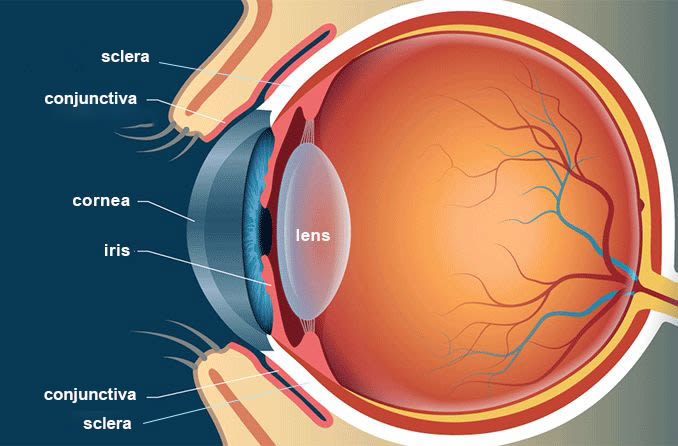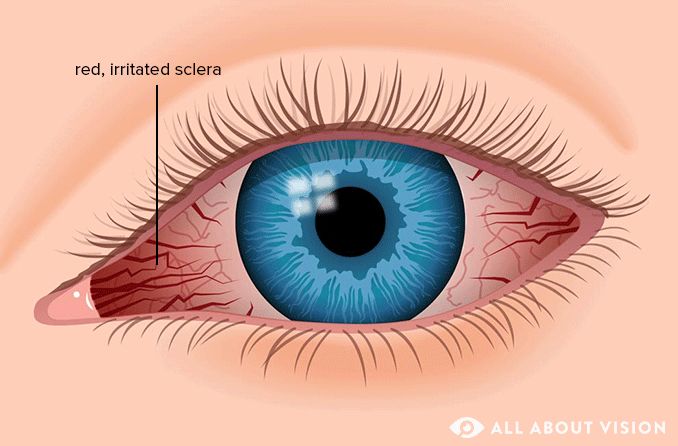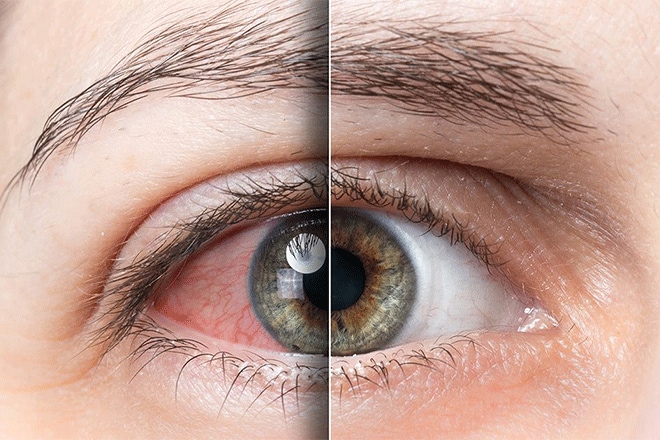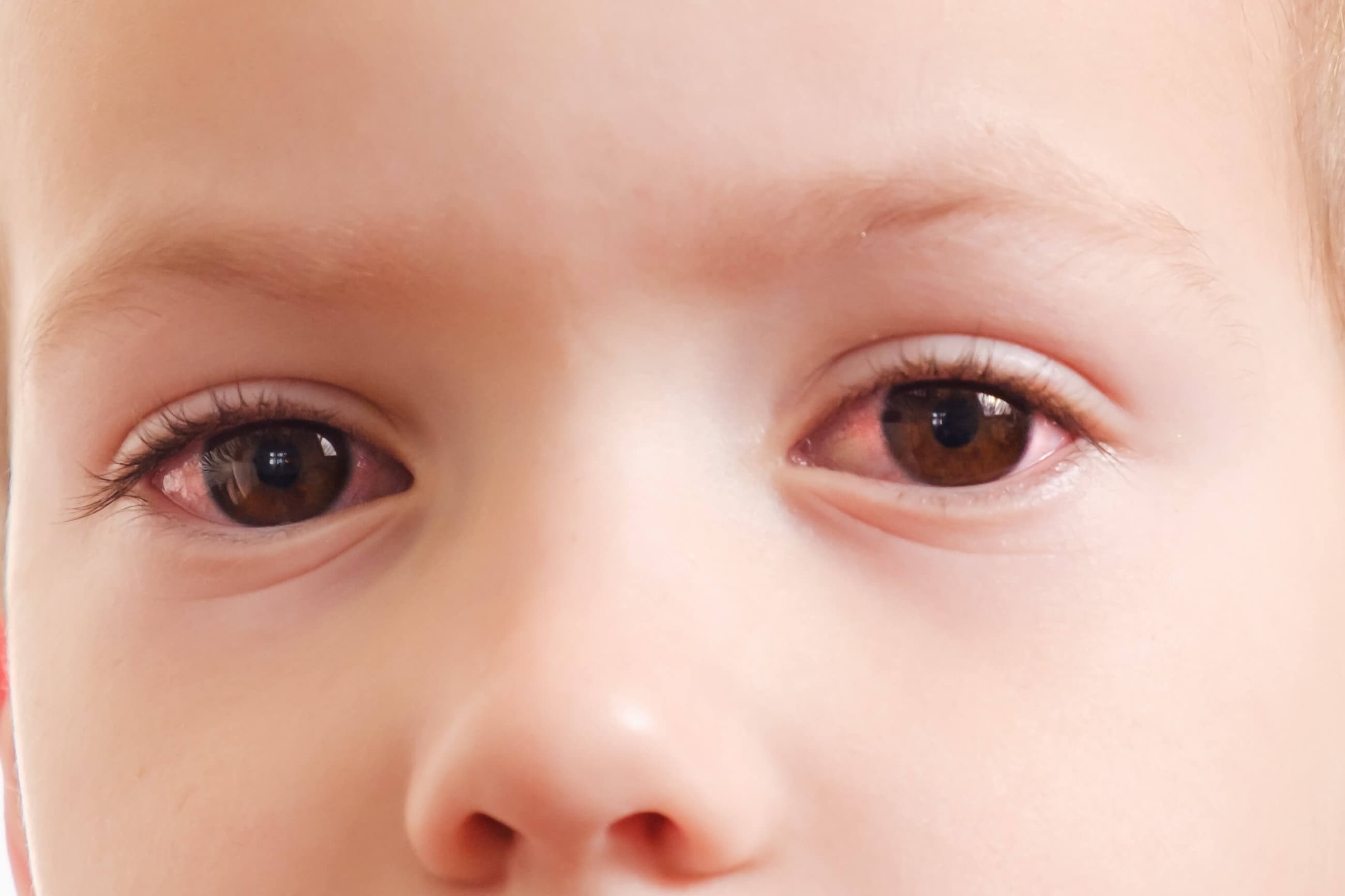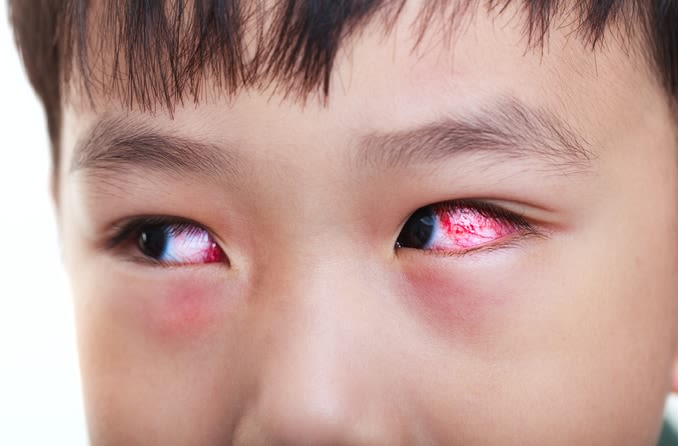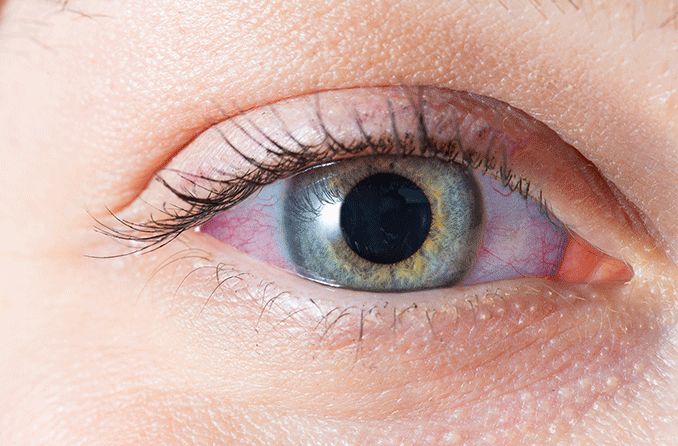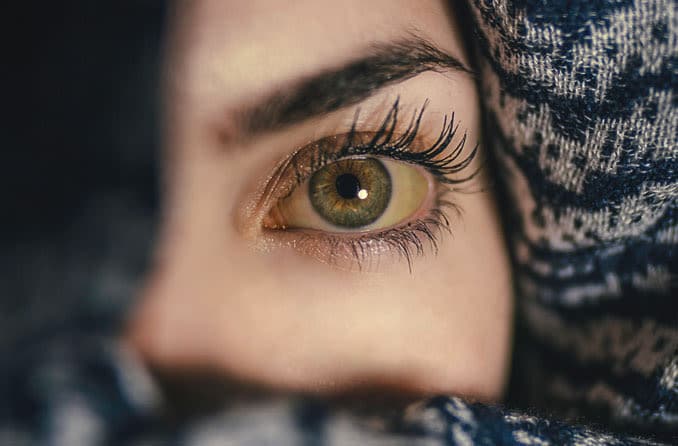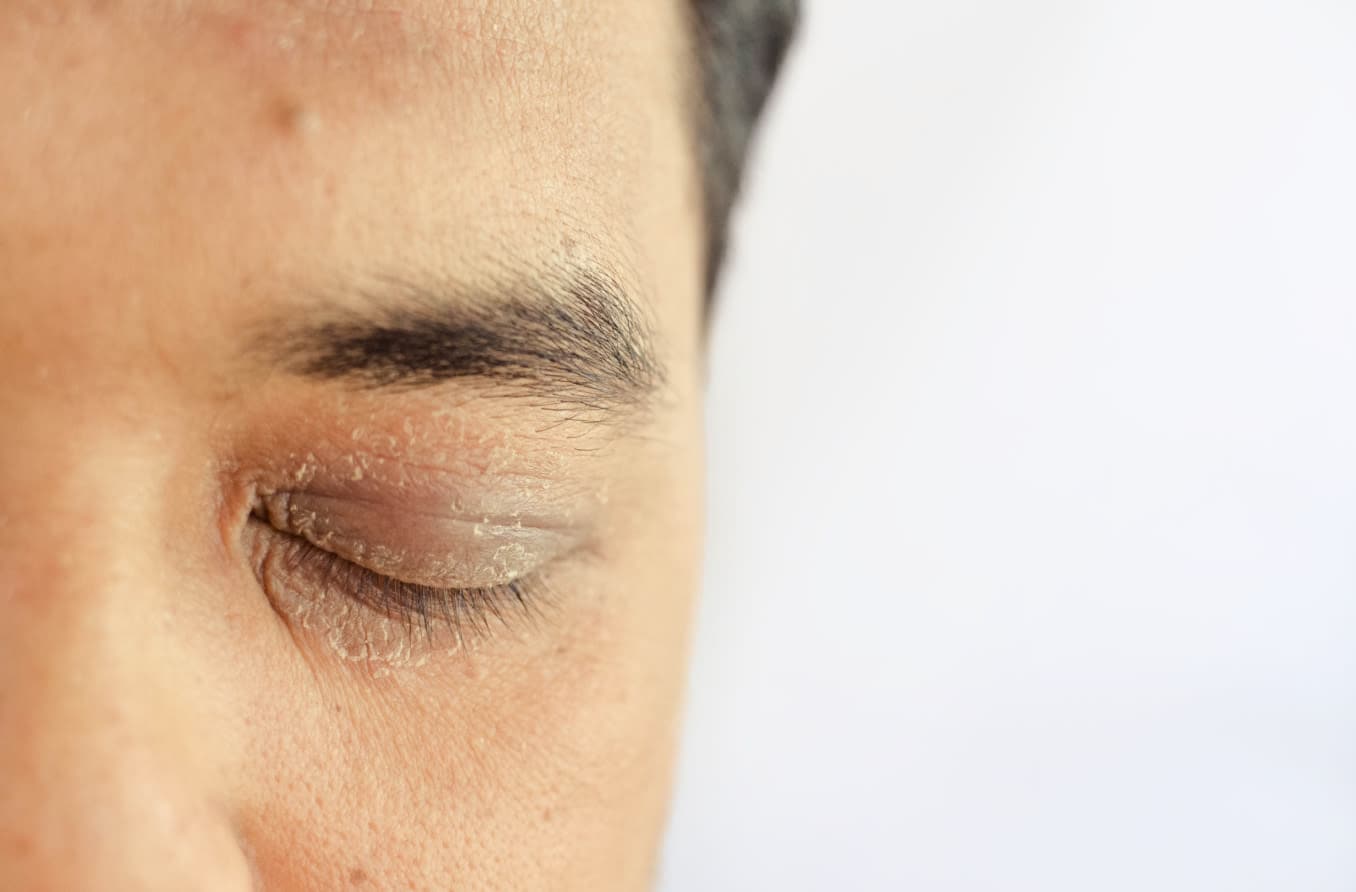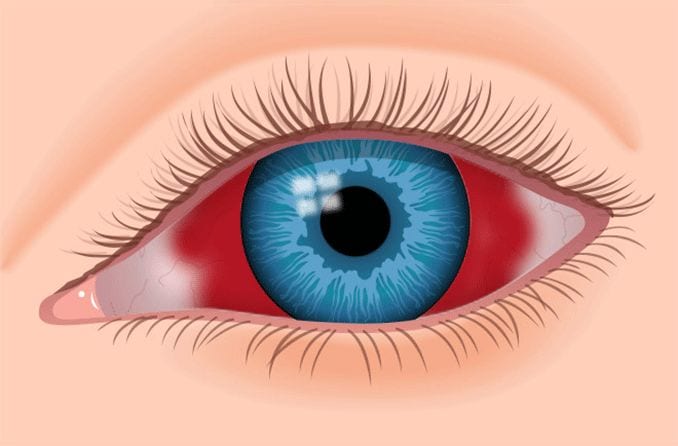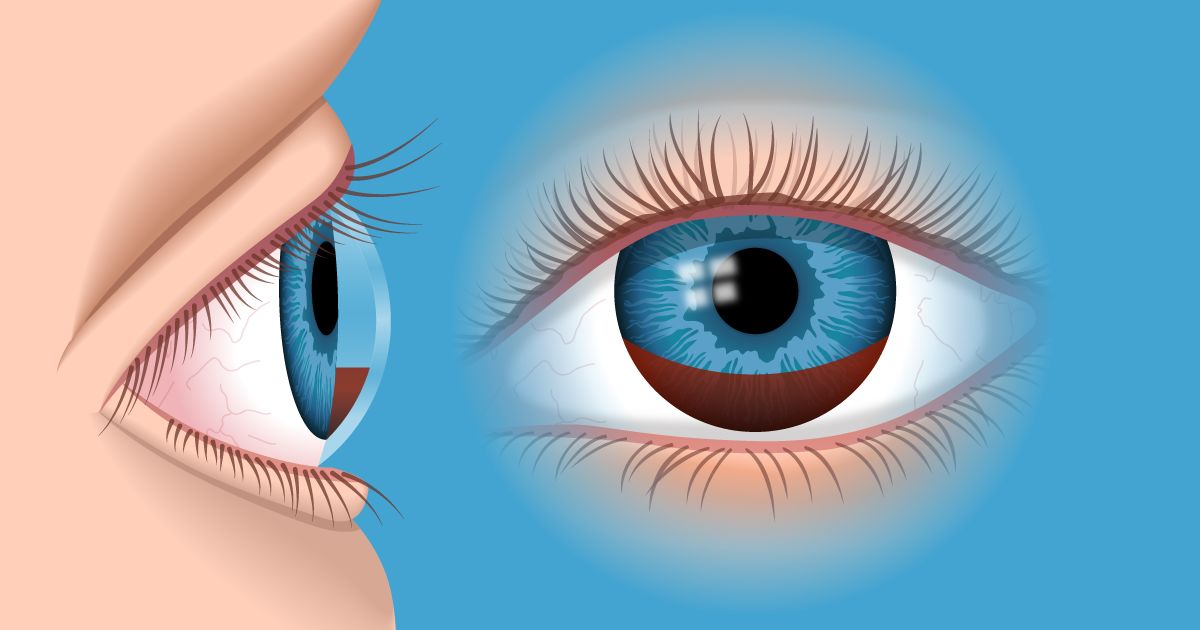Red or bloodshot eyes can result from a variety of factors. While many red eye causes are less concerning or minor, others can indicate a medical emergency and require prompt care.
The appearance of red eyes is caused by the dilation of blood vessels on the eye’s surface. These blood vessels (many of which normally are invisible) can become swollen, allowing more blood to enter the eye. This causes the eye to look red, pink or bloodshot.
Red eyes are most often caused by inflammation of the conjunctiva. Pink eye (conjunctivitis) and allergens are the most common culprits.
Red eyes are also frequently the result of dry eyes and the extended wear of contact lenses.

In some cases, a blood vessel may break, causing a bright red spot to develop on the white of the eye. This is called a subconjunctival hemorrhage and may result from an eye injury, straining, coughing or other factors. A subconjunctival hemorrhage is more likely to occur when taking a blood thinner (such as Coumadin) or an NSAID (such as ibuprofen).
Eye redness causes may include a variety of environmental or lifestyle-related reasons. However, bloodshot eyes may also signal specific eye problems.
Read on to learn more about the causes of eye redness.
Common eye conditions
A number of minor eye problems can cause the white of the eye to appear red, pink or bloodshot. These include:
Serious eye conditions
Red or bloodshot eyes may result from more concerning issues involving the eye, such as:
Allergies
Red eyes are often a sign of eye allergies. Allergens, or factors that trigger an allergic reaction to something, can be found in both indoor and outdoor environments.
When airborne allergens (such as pollen, dust, mold and pet dander) come into contact with certain types of cells in your eyes, a substance called histamine is released. Histamine causes the blood vessels beneath the eye’s surface to expand and become inflamed, often causing the eyes to become red and swollen.
Contact lens irritation
Wearing contact lenses for an extended period of time can affect the cornea, leading to eye redness and irritation. Sleeping with contact lenses in and not keeping up with proper contact lens hygiene can lead to an eye infection and cause a variety of issues, including bloodshot eyes.
Contact lens irritation may also result if the lens is poorly fitting or old, if there is debris trapped beneath it or if it is not used correctly.
Eye injury
Injury or trauma to the eye can range from minor to severe and may cause eye redness. Eye injuries may involve getting hit in the eye (blunt eye injury) or corneal abrasions, chemical burns and foreign body exposure, among others.
Lack of sleep
Not getting enough sleep can affect the eyes in several ways. It can contribute to conditions like blepharitis and dry eye, which may cause eye redness. Sleep deprivation can also decrease tear production and may cause bloodshot eyes and other signs or symptoms.
Sun damage to the eyes
Exposing your eyes to sunlight, especially without the protection of UV-blocking sunglasses, can cause a condition known as photokeratitis . Similar to the skin’s reaction to sunburn, the whites of the eyes may appear red when this condition occurs.
SEE RELATED: 5 eye conditions linked to sun damage
Eye strain caused by digital device use
Eye strain, or eye fatigue, comes from focusing the eyes on something for long periods of time. This can include watching TV or looking at a computer monitor or mobile device. Digital eye strain (also called computer vision syndrome) is a common cause of eye fatigue.
Straining the eyes, especially in the presence of glare, can make viewing a digital screen more difficult, making the eyes work harder. Eye strain can lead to bloodshot eyes and other vision and health-related problems.
Debris
Debris or a foreign object in the eye is among the common causes of bloodshot eyes. Dust, sand, dirt, eye makeup and flecks of metal are common objects that may fall or get blown into the eye, resulting in redness and other issues.
Eye irritants
Many types of environmental factors can irritate the eye and cause redness or other effects. Some of these factors include:
Other common eye irritants include preservatives (such as benzalkonium chloride) found in some eye drops. The overuse of ocular decongestant medications (such as naphazoline) may also lead to eye redness.
Lifestyle factors
Lifestyle factors can contribute to your red eye risk. For example, smoking (tobacco or marijuana) can cause red eyes, as can significant alcohol consumption. The sustained use of digital devices and insufficient sleep are other lifestyle-related causes of red eyes.
SEE RELATED: How alcohol can affect your eyes
Other health conditions
Colds or general allergies are other health conditions that can make the eyes appear red at times. For instance, COVID-19 is known to cause several types of eye problems, including the appearance of bloodshot eyes.
